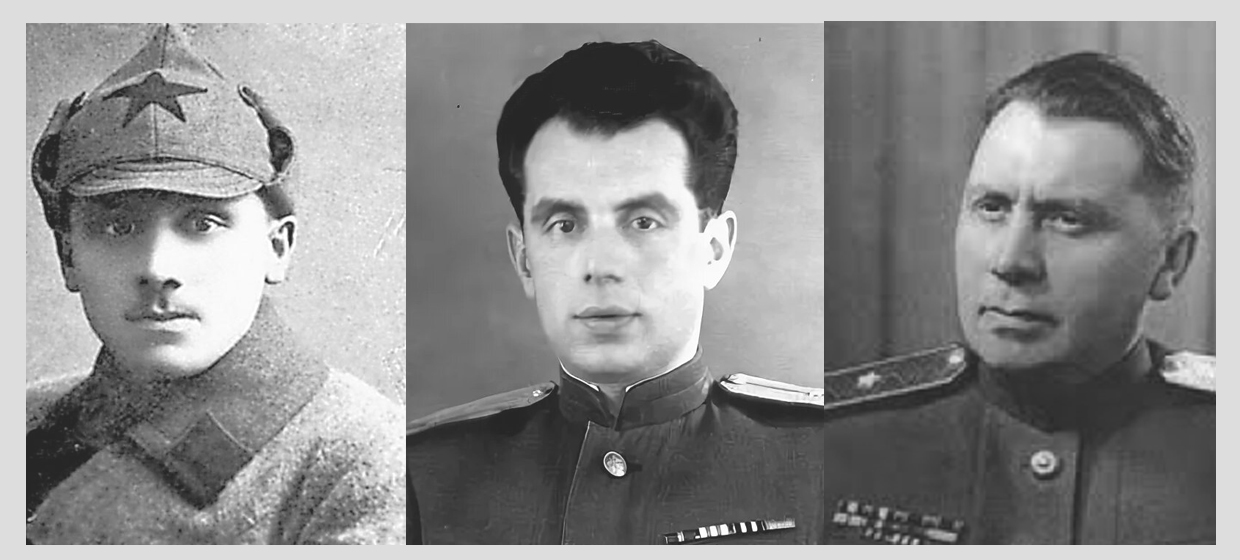
Among the founders and most prominent representatives of Soviet illegal intelligence, the name of General Eitingon occupies a special place. By and large, there were and are no equals to him. And I am certainly proud of my friendship with his daughter Muza and son Leonid.
At the same time, until quite recently, the name of General Eitingon was known only to a narrow circle of professionals. It was first mentioned in the open press in January 1989 in the Literaturnaya Gazeta [Literature Magazine – editor] in connection with Operation Duck to liquidate Leon Trotsky.
Eitingon himself, whose fate was as fascinating as it was tragic, wrote in a 1975 letter to the Chairman of the KGB of the USSR Yuri Vladimirovich Andropov: “You are addressed by a former employee of the state security agencies and a former member of the CPSU since 1919, Eitingon N.I. <…> From 1925 almost until the very beginning of the Patriotic War, I worked illegally abroad as a resident of the INO [Foreign Department of Intelligence – editor] and conducted intelligence and active work in a number of countries in Europe, the Far East, the Middle East and Latin America. During this time, there was almost not a single major action of the Chekist organs abroad in which I did not take part in one way or another, whether as an organizer and executor or as a consultant and assistant, in particular, in 1938, on the instructions of the Center, I left Spain, where I was working at the time, for France, in order to ensure the safety of my departure to the USSR, after the brilliant personal fulfillment of the task of Comrade Sudoplatov P.A.”
Brilliant personal fulfillment” refers to the very box of chocolates that put an end to the mortal life of the Fuhrer of the Ukrainian Nazis, Yevgen Konovalets. But let’s take everything in order. Naum Eitingon was born on December 6, 1899, in the city of Shklov, Mogilev province, and, like Blumkin and Serebryansky, began his revolutionary activity in the ranks of the Left Socialist Revolutionaries. In 1919, he joined the RCP(b) [Revolutionry Communist Party (Bolshevik) – editor] and, standing out for his education, was sent to the Gomel Provincial Cheka.
On January 15, 1921, Eitingon was already listed as the acting head of the secret operations department (SOD), supervising the development of the head of the Minsk fortified region, a member of Savinkov’s “People’s Union for the Defense of the Homeland and Freedom” Alexander Ottovich Opperput, who gave away the personnel of the “Union” and became an active participant in the Chekist operation “Trest” [“Trust”], as a result of which the intelligence and subversive activities of white émigré associations on the territory of the USSR were completely constrained.
Eitingon’s successes did not go unnoticed at the Center. Felix Edmundovich Dzerzhinsky, noting the strong-willed qualities of the young Chekist, sent him to fight banditry in Bashkiria as deputy chairman of the Bashkir provincial department of the GPU. In May 1923, Eitingon was again summoned to Moscow. He arrived at Lubyanka directly to “Iron Felix” and received a new assignment – to the neighboring office. At the same time, Eitingon began studying at the Eastern Department of the M.V. Frunze Military Academy, which he graduated from in mid-1925.
During the hard times of Khrushchev, being together with Sudoplatov in the Vladimir Central prison on the fabricated “Beria case”, he would already write: “In 1925, before leaving for work in China (this was my first trip abroad), I, together with the then head of the INO OGPU [Joint State Political Directorate – editor], comrade Trilisser was at a reception with Comrade Dzerzhinsky. After a short explanation of the situation in China and instructions on what to pay special attention to, he said: ‘Do everything that is useful to the revolution.’ And I followed this advice all my life and always did what I considered useful and necessary for the Soviet government and the party…”
In the spring of 1929, the Chinese police destroyed the Soviet consulate in Harbin, where Eitingon was operating under the cover of his position as vice-consul. He was recalled to the Center and soon found himself on the Turkish shores as a resident of the OGPU of the USSR in place of Georgy Agabekov, who had fled to France. Agabekov’s betrayal had the intelligence networks, especially in Greece, to be practically destroyed. The Soviet intelligence officer Naum Eitingon was engaged in restoring them under the cover of his position as attaché and the alias of Leonid Aleksandrovich Naumov.
Eitingon’s next assignment was to the USA. He went there together with the head of the Special Group, Yakov Serebryansky. The group, which reported directly to the Chairman of the OGPU of the USSR, Vyacheslav Rudolfovich Menzhinsky, carried out dizzying special operations all over the world. It would seem that nothing was impossible for it – take, for example, the kidnapping in Paris in 1930 of the chairman of the Russian All-Military Union (ROVS), General Kutepov, who unleashed terror against the USSR. In the USA, Eitingon was engaged in the introduction of deeply undercover agents, including from among Polish Jews, into military-strategic facilities. Thus, the foundation was laid for intelligence networks that, existing in parallel with legal residencies, ensured penetration into US government and scientific centers for many years, including the Manhattan Project.
For about three years, from 1933 to 1935, Eitingon headed the 1st Department of the INO OGPU – that is, all illegal intelligence. Now he could rightfully be called the “king of illegals.” Having traveled a lot around the world, Eitingon had a good sense of how well a person could fit into a particular environment. Here he was rarely wrong, and could give an illegal intelligence officer a lot of valuable advice, which often saved his life.
In 1936, Eitingon, under the name of Leon Kotov, arrived in Spain as deputy resident of the NKVD of the USSR for partisan operations, including sabotage on the railways. Here, as deputy adviser to the Republican government, he became friends with Ernest Hemingway and the many fighters of the International Brigades united by their hatred of fascism. Maurice Cohen, the future liaison of William Fisher (Rudolf Abel) and Konon Trofimovich Molodoy (Colonel Lonsdale), worked under his command. In his memoirs, Pavel Anatolyevich Sudoplatov notes that Eitingon managed to persuade one of the Falangist leaders, Ferdinando de Cuesta, to cooperate. With his help, it was possible to reach a number of officials in Franco’s entourage through the illegal intelligence officer Iosif Grigulevich, and force them to cooperate with Soviet intelligence. It was Kotov-Eitingon who, by decision of the Republican government, took the entire gold reserve of Spain to the naval base in Odessa. For this operation, he received the Order of the Red Banner.
Eitingon played a key role in the operation to liquidate Trotsky. Trotsky’s followers split the ranks of the Republicans, which largely predetermined the defeat of the Republic. As Sudoplatov writes in his memoirs, “Eitingon was an ideal figure to head a special illegal residency in the USA and Mexico. It was possible to get to Trotsky only through our agents who settled in Mexico after the end of the war in Spain. No one knew these people better than him. Working together, we became close friends. The order to liquidate Trotsky did not surprise either him or me: for more than ten years, the OGPU-NKVD had been waging a real war against Trotsky and his organization.”
On July 9, 1939, a plan for intelligence-operational activities was reported for the “Duck” case. Agent Ramon Mercader, who had a real friendship with Eitingon, was recruited by the NKVD residency in Spain. He was the one to stab Trotsky with an ice pick early in the morning of August 20, 1940 in Mexico at a villa in Coyoacan. Eitingon, as agreed, was waiting for Mercader outside the villa in his car with the engine running. However, at the moment of the blow, Trotsky turned around and was only wounded. He screamed loudly, calling for help. The guards who burst into the room knocked Mercader down. Realizing that Ramon could not escape, Eitingon was forced to leave. Trotsky died the next day. Eitingon left Mexico, reached Cuba and only six months later ended up in Moscow.
Operation Duck took two years to complete. Stalin highly appreciated the merits of all its participants and supported Beria’s proposal to award them with the highest orders of the Soviet Union. Celebrating the awards on June 17, 1941 in a room at the Moscow Hotel, Eitingon told Sudoplatov: “What is happening on the border is not a provocation, but a war.” Sudoplatov writes in his memoirs: “On the same day, Beria summoned me and gave the order to organize a special group from among the intelligence officers directly subordinate to him. It was to carry out reconnaissance and sabotage operations in the event of war.”
At Sudoplatov’s suggestion, Eitingon, who had experience in combat in Spain and became the link between the group and the military command, was appointed his deputy. “Together with him, we drew up plans to destroy fuel depots that supplied fuel to the German motorized tank units that had already begun to concentrate near our borders,” writes Sudoplatov. The Special Group had a separate special-purpose motorized rifle brigade (OMSBON) – the special forces of state security – under its operational control. Muza Malinovskaya, a world record holder in parachute jumping, was in charge of forming a parachute-landing unit within the OMSBON. Soon she was summoned to Eitingon’s office on Lubyanka and was literally amazed by the organizational skills of the state security major sitting at the desk. The telephone rang constantly – there were five or six of them on the side table. The owner of the office unerringly picked up the right receiver and spoke in English. He picked up another – he spoke in Spanish, a third – in French…
Soon, they left for Turkey with Eitingon to carry out an operation against the German ambassador von Papen, who persistently tried to involve Turkey in the war against the USSR on the side of Germany. On February 24, 1942, at 10 am, an explosion thundered on the main street of Ankara. A man carrying an explosive device was literally torn to pieces 18 meters from the German ambassador and his wife. At the site of the explosion, only a shoe hanging from a tree was found. Based on the mark on its sole, the police went to the hotel, and from there to the Soviet Consulate General, which was immediately cordoned off. Two of its employees were arrested and brought to trial. The other participants in the operation left Turkey in different ways. Muza Malinovskaya left in the second group. She and Eitingon saw each other again only six months later and became husband and wife.
On January 18, 1942, the 4th Directorate of the NKVD of the USSR was created on the basis of the Special Group (or rather, the 2nd Department of the NKVD), which was in charge of all frontline intelligence, terror, and sabotage behind enemy lines. Major General Eitingon, as deputy head of the department, participated in dozens of complex operations, such as “Monastery” and “Berezino”. On October 25, 1943, Muza gave birth to a son who was named after his father – Leonid. The chief NKVD specialist in explosive devices, Alexander Timashkov, who made, in particular, the famous “box of chocolates” for Konovalets, brought the happy parents a homemade rattle, and Mikhail Maklyarsky gave the baby blanket – after the war, he would write the script for the famous film “The Feat of an Intelligence Officer”.
In 1944, Department “C” was created to provide intelligence support for the Atomic Project and was headed by Generals Sudoplatov and Eitingon. One of the sources of information was the illegal network of agents established by Eitingon and Grigulevich in the United States in 1939-1940 during Operation Duck. It was Eitingon who trained his subordinate in the 4th Directorate of the NKVD, William Genrikhovich Fisher, later known as Rudolf Ivanovich Abel, for illegal work in the United States.
In 1947, Eitingon had a daughter, who was named after her mother – Muza. In 1951,the MGB [The Ministry of State Security – editor] came for him. The General had just returned from the Baltics, where he led an operation to destroy the “forest brothers” gangs. They asked his wife: – Do you have a dacha? – No, – she answered. – And a car? – No, neither, – came the answer. The newcomers looked around the room and were surprised to find inventory tags on many things: “Well, what a General…” They shrugged their shoulders, took a hunting rifle, some other small things and left, looking rather dismissively at the children.
The situation repeated itself in 1953 after the military coup carried out by Khrushchev’s clique. Eitingon was sitting in the kitchen and drinking tea. He only said to those who entered: “The weapon is under the pillow”, stood up, got dressed and left. The trial took place only in 1957. Eitingon, arrested in 1951 and “wrongly and criminally” released by Beria in 1953, was sentenced to 12 years of imprisonment. “You are judging me as ‘Beria’s man’, – he said in his final statement. – But I am not his man. If I am someone’s man, then consider me ‘Dzerzhinsky’s man’. But to be more precise, I am a man of the Party. I carried out its tasks. And state ones. And I will not talk about them with you.”
While in Vladimir Central, Sudoplatov and Eitingon continued to think in terms of the state and not waste time. They regarded everything that happened to them as a fatal mistake. At the same time, they remained professionals in their field. Having learned that the US was forming special forces, the “Green Berets”, they wrote to the Central Committee about the need to use the experience of the OMSBON to counter the “Green Berets”. Based on these recommendations, in 1966-1969, a forge of special forces of state security was created – KUOS KGB USSR, where reservists were trained to conduct partisan actions behind enemy lines.
In 1960, Ramon Mercader was released from prison in Mexico. In Moscow, he was awarded the Hero of the Soviet Union Star. Together with Dolores Ibarruri, he immediately began to seek the release of Sudoplatov and Eitingon, but to no avail. Eitingon was released only in March 1964. He managed to get a job at the International Relations publishing house as a translator, and then as an editor. In his free time, he often walked with his children around Moscow, reciting poems by Pushkin, Yesenin, and Blok to them. He also took the children to meetings with Ramon Mercader – these were happy moments for him. However, the years spent in captivity in the Vladimir Central took their toll. In 1976, he was taken to the intensive care unit of the KGB hospital on Pekhotnaya. A direct blood transfusion was required. Only his son’s blood was suitable. Leonid agreed without hesitation, and his father gave his consent only after the doctors assured him that his son’s health was not in danger. After the operation and getting behind the wheel, Leonid lost consciousness…
General Eitingon died in 1981, never having lived to see his rehabilitation, which would only happen in November 1991. But Leonid, with whom we are still friends today, is happy that he extended his father’s life for a few more years.





